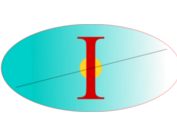Citation:

Date Published:
28 Sept 2022Abstract:
Electron-transfer reactions are ubiquitous in chemistry and biology. The electrons quantum nature allows its transfer across long distances. In the well-known harpoon mechanism, electron-transfer results in Coulombic attraction between initially neutral reactants that leads to dramatic increase in the reaction rate. Here we present a different mechanism, in which electron-transfer from a neutral reactant to a multiply charged cation results in strong repulsion that encodes the electron-transfer distance in the kinetic energy release. 3D coincidence-imaging allows to identify such “inverse” harpoon products, predicted by non adiabatic molecular dynamics simulations to occur between H2 and HCOH2+ following double-ionization of isolated methanol molecules. Detailed comparison of measured and simulated data indicates that while the relative probability of long-range electron-transfer events is correctly predicted, theory overestimates the electron-transfer distance.
Notes:
Publisher: American Association for the Advancement of Science



